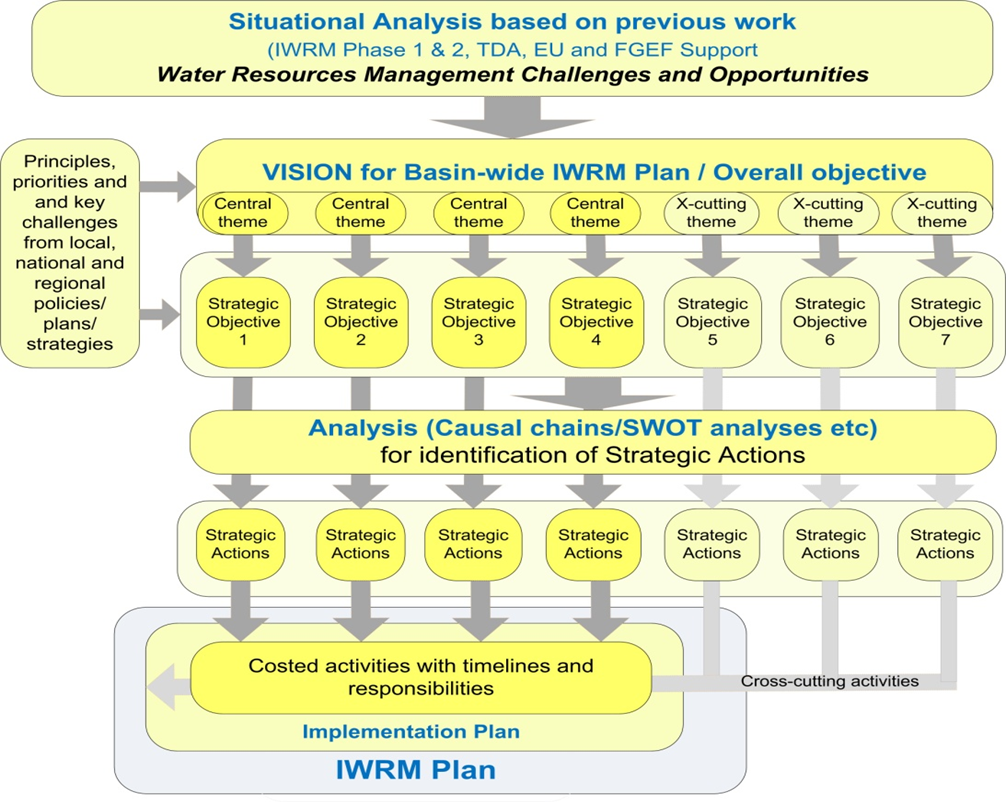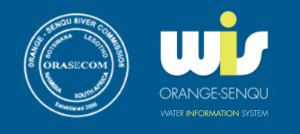Introduction
This article outlines the aims and objectives of the basin-wide Integrated Water Resources Management (IWRM) Plan development as well as how the work would be carried out through a combination of consolidation of technical studies and stakeholder consultation. During the development of the IWRM Plan it is ensured that the key basic elements are agreed up on by ORASECOM before following steps are taken.
Contributing Technical Studies
The following studies done for ORASECOM through donor funding organisations contributes towards the development of the IWRM Plan:
- Study: Orange River Integrated Water Resources Management (IWRM) Plan; Funding Organisation: GIZ; Date: 2007
- Study: Orange-Senqu Basin-wide Integrated Water Resources Management (IWRM) Plan – Support to Phase 2; Funding Organisation: GIZ; Date: 2012
- Study: Orange-Senqu Basin-wide Integrated Water Resources Management (IWRM) Plan – Support to Phase 3; Funding Organisation: GIZ; Date: 2013 – 2015
- Study: Strategic Action Programme for the Orange-Senqu River Basin, Funding Organisation: Global Environment Facility through United Nations Development Programme; Date: 2012 – 2014
- Study: Transboundary diagnostic analysis (TDA), Funding Organisation: Global Environment Facility through United Nations Development Programme; Date: 2013 – 2014
Related Articles:
2014 Integrated Water Resources Management Plan (IWRMP) – Summary and Documents
The Process of developing the IWRM Plan
The proposed approach for building the plan is shown in the flow chart below. As can be seen from the flow chart, development of the plan is built on a Vision of IWRM for the basin and associated themes and strategic objectives.

(Click to enlarge)
Preliminary work derived seven themes, four considered as “central” and three as “cross-cutting”. These themes are only preliminary and will be finalised through consultation with key stakeholders.
The four central themes were presented as follows:
- Optimised management of the basins water resources
- Social upliftment and poverty reduction
- Environmental degradation (aquatic and terrestrial environments
- Disaster management (especially flood and drought, climate change)
The three cross-cutting themes were presented as follows:
- Adequate knowledge base.
- Capacity building and institutional strengthening
- Stakeholder consultation and participation
To date work has focussed on trying to consolidate these themes and to ensure that they reflect a Vision of IWRM for the Orange-Senqu Basin. Consultative processes have been initiated to ensure that progress is made towards consensus on the Vision and strategic objections that would guide further development of the Plan.
Goals and Vision
Despite the fact that an IWRM Plan for the basin has been on ORASECOM’s agenda for many years, a vision of IWRM for the basin remains absent. Such a vision is necessary to provide direction for the IWRM Plan. It is generally agreed that the overall objective for the IWRM Plan; agreed at high-level stakeholder workshop (“Delphi process”) in 2011 provides a good point of departure for the visioning process. This, the seven provisional themes already introduced above, an overview of various initiatives, plans; strategies, agreements and treaties were used by the Regional Working Group to carry out a visioning exercise in Pretoria in October 2013. The details of this process are provided in a comprehensive workshop report.
Participants in the workshop first critically examined the seven provisional themes and came up with suggestions for both revisions and additions. They then developed goals on which the Vision statement could be based. These are summarised in the table below.
| Provisional theme | Goal | Comments |
| 4 Central themes / goals | ||
|
Optimised sustainable management of the basins water resources |
Optimised sustainable management of the basins water resources |
“Sustainable” added. Concept of optimisation is important and is retained |
|
Socio-economic upliftment and poverty eradication |
Socio-economic upliftment and eradication of poverty |
“social” changed to “socio-economic” and “reduction” to “eradication” |
|
Environmental degradation (aquatic and terrestrial environments) |
The adverse effects of catchment degradation are reduced and the sustainability of resource use is improved (adapted from SAP) |
|
|
Security from water-related disasters (especially flood, drought, climate change) |
Security from water-related disasters |
Changed from “disaster management” to be in line with Regional Water Policy |
| 5 enabling themes / goals (previously “cross-cutting”) | ||
|
Adequate knowledge base |
Knowledge base in place, adequate to ensure realisation of goals 1-4 |
Suggestion to change to “knowledge management” for theme. However concept of “adequacy” as enabler is considered appropriate |
|
Capacity building and institutional strengthening |
Sufficient capacity and institutional strength to ensure realisation of goals 1–4. |
|
|
Stakeholder consultation and participation |
Sufficient level of stakeholder participation to ensure realisation of goals 1-4. |
|
|
Financing mechanisms |
Appropriate financing mechanisms in place to ensure realisation of goals 1-4. |
New theme |
|
Adaptive management, monitoring and evaluation |
High level of adaptive management, effective monitoring and evaluation to ensure realisation of goals 1-4 |
New theme |
| 2 cross-cutting themes / goals | ||
|
Climate change |
Adaptation to potential impacts of climate change mainstreamed into planned actions |
Cuts across all central themes and some enabling themes |
|
Gender mainstreaming |
Consideration of gender mainstreamed into planned actions |
Cuts across all most central themes and enabling themes |
In the above table the four central themes are maintained. However, there are now five “enabling” themes (previously referred to as three “cross-cutting” themes). Two genuinely cross-cutting themes have been added. It is proposed to adopt these themes and goals for taking further in development of the IWRM Plan.
One of the aims of defining goals was to facilitate the drawing up of a Vision of IWRM for the basin. The Regional Working Group worked on this task using essentially the goals associated with the four central themes to define the Vision. After some debate and bearing in mind that the Vision (statement) is a vision of the future after the achievement of the goals, a Vision was agreed by the Regional Working Group as follows:
A well-managed water secure basin with prosperous inhabitants living in harmony in a healthy environment.
There was some discussion as to whether there was a need to explore possible slight amendments or rewording to provide a stronger emphasis on sustainability and development. This could still be considered but it can be argued that “well-managed’, “secure” and “prosperous” adequately capture the ideas of sustainability and development.
It should be stressed that the Vision statement does not aim to state how or what has to be done for the envisioned future state to be achieved. The identification of those mechanisms will be achieved through consideration of what actions are required to realise the goals. The above Vision Statement has been proposed for approval by ORASECOM.
Strategic Objectives
Transformation of the proposed themes or goals into strategic objectives is straightforward:
Central objectives:
- Ensure the optimised sustainable management of the basins water resources
- Support socio-economic upliftment and eradication of poverty in the basin
- Ensure that the adverse effects of catchment degradation are reduced and the sustainability of resource use is improved
- Maximise security from water-related disasters (especially flood and drought)
Enabling strategic objectives:
In order to support the realisation of central strategic objectives:
- Put an adequate knowledge base in place,
- Build sufficient capacity and institutional strength,
- Promote high level of stakeholder engagement
- Ensure appropriate financing mechanisms are in place,
- Promote adaptive management and effective monitoring and evaluation systems.
Cross-cutting strategic objectives:
- Promote the main-streaming of adaptation to potential impacts of climate change into planned actions
- Ensure the main-streaming of gender considerations into planned actions
